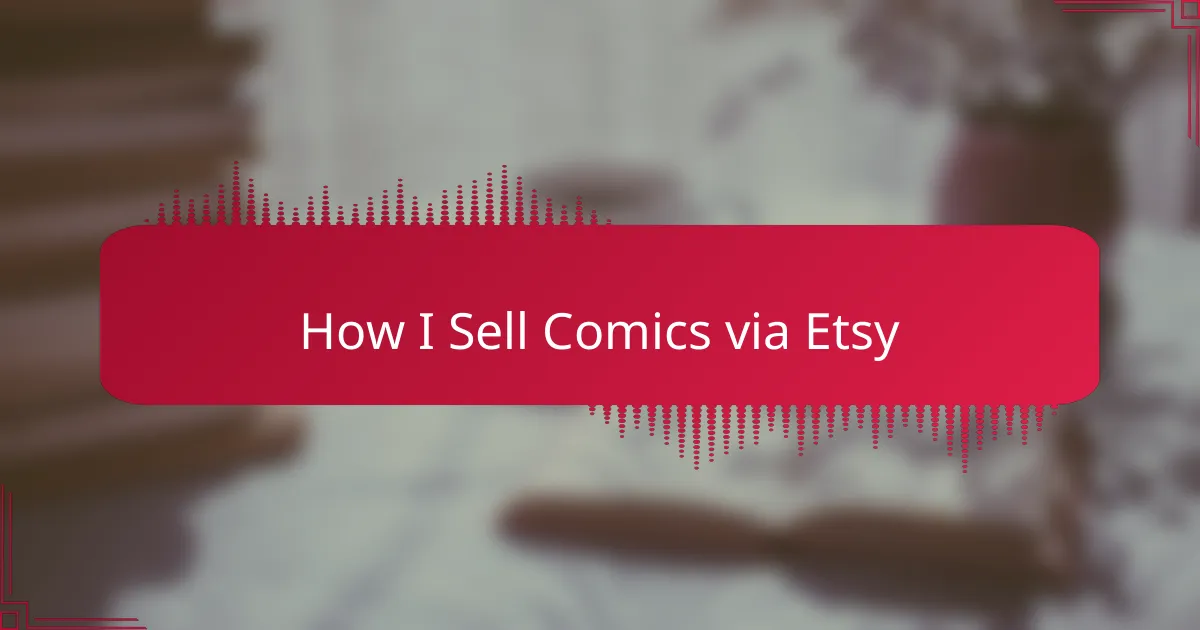Key takeaways
- Selling comics on platforms like Etsy offers global reach, low startup costs, and full creative control, fostering community engagement with readers.
- High-quality visuals and engaging comic listings are crucial for attracting buyers, along with maintaining competitive pricing and detailed descriptions.
- Utilizing social media for authentic engagement and collaborations with other artists can significantly enhance visibility and foster connections within the comic community.
- Building personal connections with readers through shared stories and behind-the-scenes insights enhances the overall selling experience and reinforces the artistic journey.
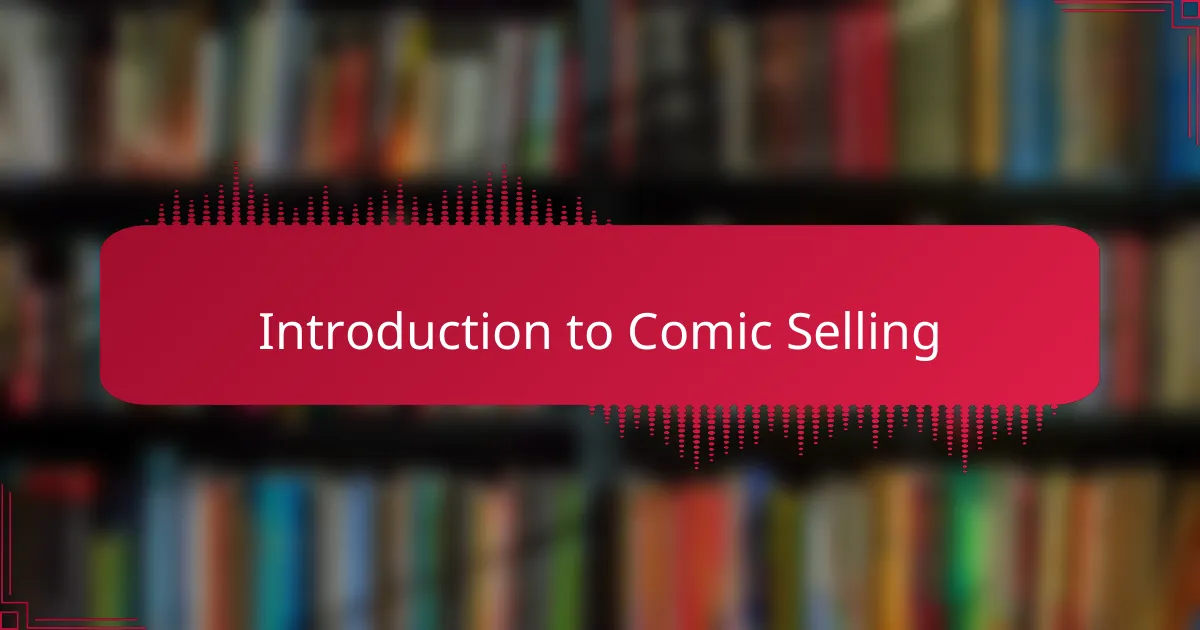
Introduction to Comic Selling
When it comes to selling comics, there’s a unique thrill that comes with it. I remember the first time I listed my comics on Etsy; it felt like sharing a piece of my soul with the world. The excitement of seeing someone appreciate my work made every late night spent illustrating worth it.
Navigating the world of online sales can be a bit daunting, but with platforms like Etsy, you have the chance to connect directly with your audience. I found that understanding your niche and presenting your art authentically is vital. In my experience, it’s not just about the comics; it’s about building a community around your work.
Here’s a quick comparison of the benefits of selling comics through Etsy versus traditional comic book stores:
| Aspect | Etsy | Comic Book Stores |
|---|---|---|
| Audience Reach | Global | Local |
| Costs | Low startup costs | Higher overhead |
| Creative Control | Full control over presentation | Limited by store policies |
| Community Engagement | Direct interaction with readers | Often indirect |
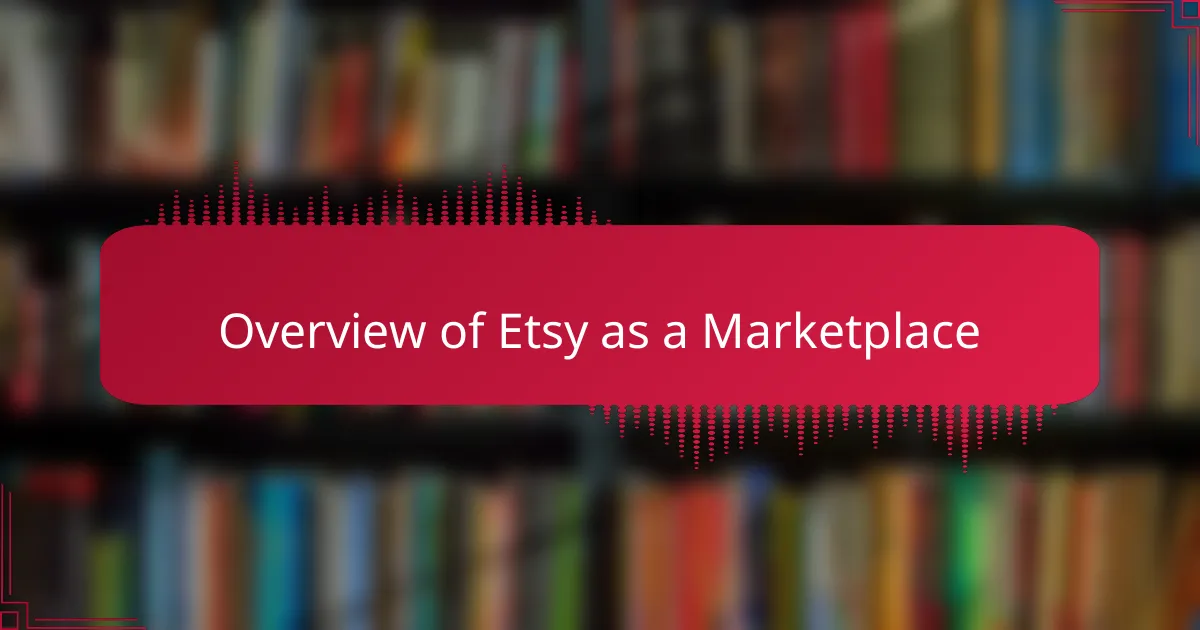
Overview of Etsy as a Marketplace
Etsy stands out as a vibrant marketplace, especially for creatives like comic book authors. The platform focuses on handmade and unique items, which means when I list my comics there, I’m stepping into a community that appreciates artistry and originality. I recall the warm messages I’ve received from readers who found my work on Etsy; it truly reinforces the idea that you’re not just selling a product but sharing your passion.
One of the fascinating aspects of Etsy is its global reach. I remember when I sold my first comic to someone halfway across the world. It felt surreal to know that my work resonated with someone from a completely different background. This international exposure not only expands your audience but also opens up opportunities for diverse interactions and feedback that can enrich your creative process.
Moreover, Etsy allows authors like me to maintain creative control over how we present our comics. This freedom has been empowering; I’ve crafted my shop’s aesthetic to reflect my unique style. Having the ability to tell my story through visual presentation makes the experience personal and rewarding, and isn’t that what every artist desires?
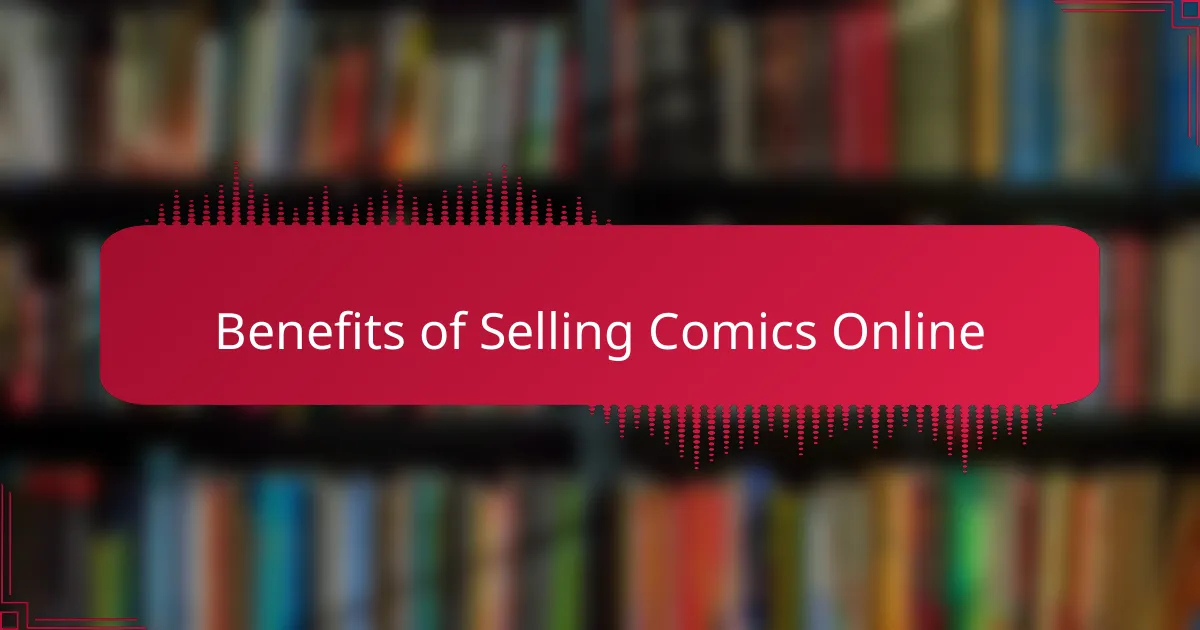
Benefits of Selling Comics Online
Selling comics online offers several significant advantages that can amplify both your reach and your income. For instance, when I first ventured into selling my own comics, I discovered that the online marketplace removes geographical limitations, allowing fans from all over the world to discover my work. This global audience not only boosts sales but also fosters connections with readers who share a passion for storytelling and artistry.
Additionally, the flexibility of managing an online shop empowers creators like me to experiment with different pricing strategies and marketing techniques without the constraints typically found in brick-and-mortar environments. I’ve learned that building a brand on platforms like Etsy is an adventure filled with creative freedom, where each sale feels like personal validation of my efforts.
- Reach a wider audience without geographical constraints.
- Lower overhead costs compared to physical storefronts.
- Ability to showcase multiple pieces of artwork and collections.
- Flexibility to adjust pricing and promotional strategies easily.
- Direct connection and interaction with readers through reviews and messages.
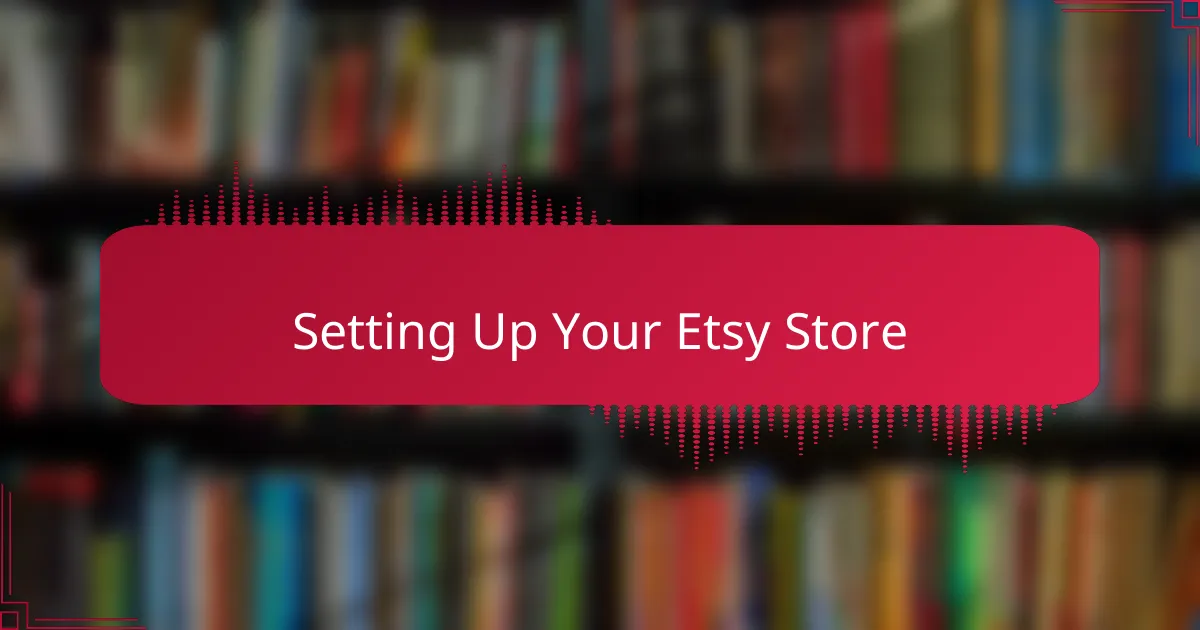
Setting Up Your Etsy Store
Setting up your Etsy store is one of the most thrilling steps in your journey as a comic book author. I remember the excitement I felt when I created my own shop; it was like opening the door to a new world where my work could finally reach readers. Etsy’s user-friendly platform allows you to customize your store, so you can reflect your unique style and brand right from the start.
To help you get started, here are some key steps to consider when setting up your Etsy store:
- Create a compelling shop name that resonates with your comic’s theme and is easy to remember.
- Craft an engaging bio that shares your story and passion for comics, giving potential buyers a glimpse into your artistic journey.
- Design eye-catching banners and logos to create a visually appealing storefront.
- List your products with high-quality images and detailed descriptions. This is crucial as your comic’s visuals are your selling point.
- Set competitive prices by researching similar comics, ensuring you’re valuing your work appropriately while attracting buyers.
- Establish shop policies for shipping, returns, and customer service to build trust and transparency with your audience.
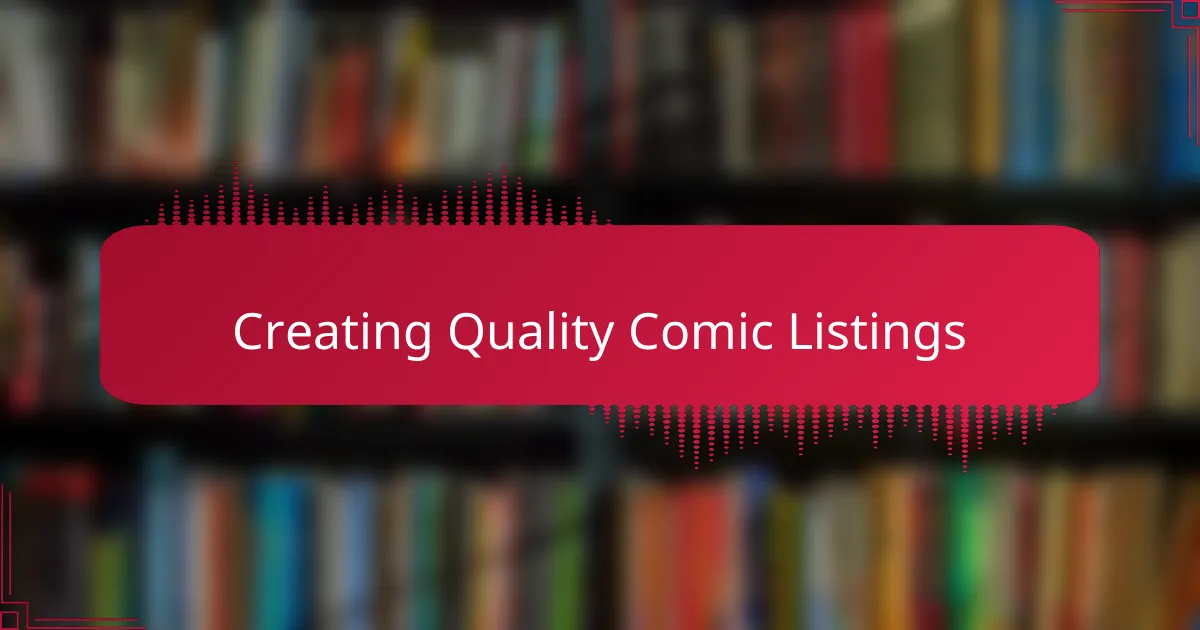
Creating Quality Comic Listings
Creating compelling comic listings on Etsy is crucial to attract potential buyers. When I first started selling my comics, I realized that quality visuals were key. High-resolution images showing the artwork clearly can significantly influence a customer’s decision to click that “Buy” button. I remember how excited I was when I invested time into photographing my comic covers, and how that little effort made a noticeable difference in my sales.
To ensure your listings stand out, consider these tips:
- Use high-quality images that show off your art well, ideally from multiple angles.
- Write engaging and descriptive titles that encapsulate the story or theme of your comic.
- Optimize your descriptions with relevant keywords while maintaining a conversational tone.
- Set competitive but fair prices based on market research.
- Highlight any unique elements—like limited editions or exclusive content— to entice buyers.
- Update your listings regularly based on trends or feedback you receive.
By focusing on these aspects, you can enhance the appeal of your comic listings and boost your chances of making a sale.
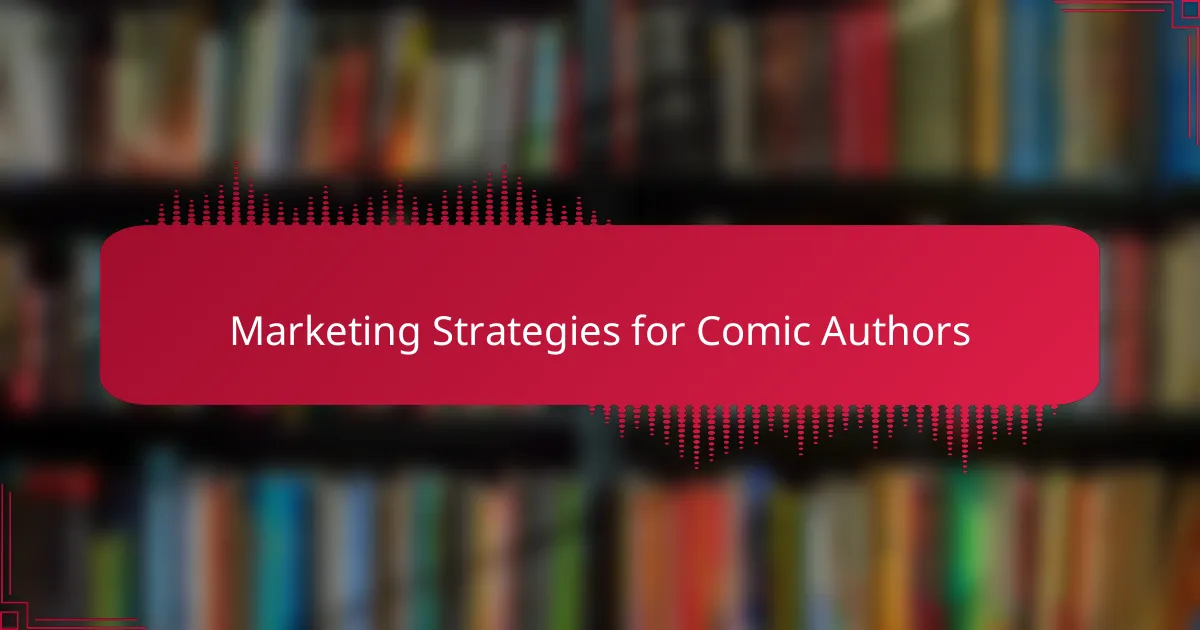
Marketing Strategies for Comic Authors
When I first started selling my comics on Etsy, marketing felt overwhelming. However, I quickly learned that authentic engagement with my audience was key. Social media became a vital platform where I could share behind-the-scenes glimpses of my creative process and connect with fellow comic enthusiasts. I found that posting regular updates not only built excitement around my work but also fostered a sense of community.
I also discovered the power of collaborations with other artists. Teaming up for giveaways or featuring each other’s work brings together both of our audiences, which can lead to increased visibility. This strategy has not only expanded my reach but has also enriched my creative journey through shared experiences and friendships.
- Utilize social media platforms (Instagram, Twitter, Facebook) to showcase your artwork.
- Engage with your audience through stories and polls to understand their preferences.
- Offer exclusive promotions or limited-time items to create urgency.
- Collaborate with other comic creators for cross-promotions.
- Share personal stories or insights about the creation process to foster connection.
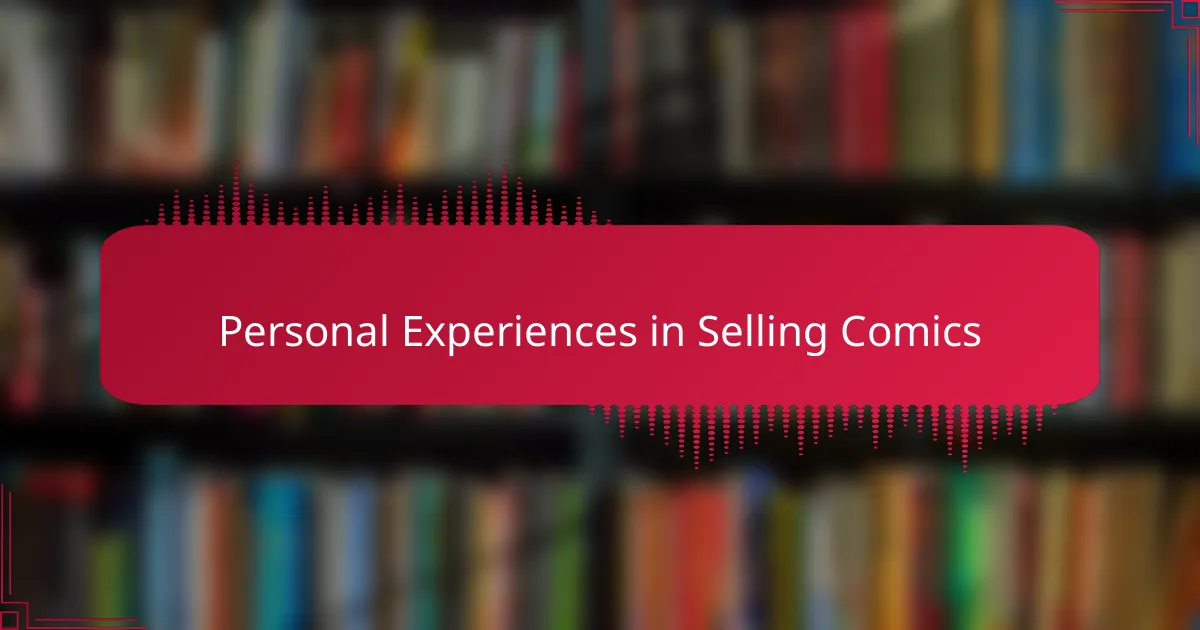
Personal Experiences in Selling Comics
One of the most rewarding aspects of selling comics has been the personal connection I’ve developed with my readers. I vividly recall the day I received an email from a fan who expressed how my story resonated with her own experiences. It made me realize that my comics weren’t just products; they were a medium for dialogue and connection. Isn’t it incredible how art can bridge gaps and create understanding between people?
Initially, I faced challenges in reaching my target audience. There were moments of doubt, wondering if anyone would be interested in my work. After investing time in understanding my niche and fine-tuning my listings, I felt a shift. Suddenly, I was getting feedback from readers who were genuinely excited about my comics. Each message felt like a little victory, reinforcing my passion for creating and sharing stories.
My journey has taught me the importance of authenticity. I learned that when I share my artistic journey—my struggles and triumphs—it resonates more with potential buyers. For example, after I started posting about the behind-the-scenes of my creative process, I noticed an uptick in engagement. It’s moments like these that remind me that in this business, it’s not just about selling comics; it’s about building a community that shares in the love of storytelling.
